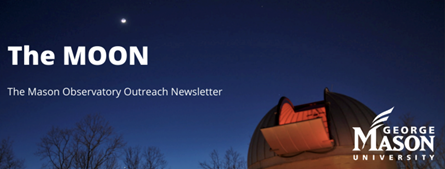by Bill Burton
 The thought process that led to purchasing this scope started years ago at a lunch meeting of the Analemma society in Great Falls, where I was an invited speaker. Marty Cohen of Company 7 was talking about the steadily increasing demand for Astrophysics refractors, and the steadily lengthening wait lists. Meanwhile, Peter Ceravolo, a well-known master optician from Canada, was advertising his diffraction-limited 5.7-inch (145 mm) f/6 Maksutov-Newtonian in Sky and Telescope for a little over $2000–a bargain compared to AP refractors of similar aperture. I looked at his ad again after returning home from the Analemma meeting — would this be the next Astrophysics, offering beautiful but inaccessible (and very expensive) telescopes? I decided to call up Peter and order his telescope, which would be shipped in a year, he said. Not long after, the ads disappeared from S&T: Ceravolo was getting out of the telescope-making business, and was no longer taking orders — but I’d made it in! Finally, after a 2 1/2-year wait(!) my telescope arrived, just before Christmas 2001.
The thought process that led to purchasing this scope started years ago at a lunch meeting of the Analemma society in Great Falls, where I was an invited speaker. Marty Cohen of Company 7 was talking about the steadily increasing demand for Astrophysics refractors, and the steadily lengthening wait lists. Meanwhile, Peter Ceravolo, a well-known master optician from Canada, was advertising his diffraction-limited 5.7-inch (145 mm) f/6 Maksutov-Newtonian in Sky and Telescope for a little over $2000–a bargain compared to AP refractors of similar aperture. I looked at his ad again after returning home from the Analemma meeting — would this be the next Astrophysics, offering beautiful but inaccessible (and very expensive) telescopes? I decided to call up Peter and order his telescope, which would be shipped in a year, he said. Not long after, the ads disappeared from S&T: Ceravolo was getting out of the telescope-making business, and was no longer taking orders — but I’d made it in! Finally, after a 2 1/2-year wait(!) my telescope arrived, just before Christmas 2001.
The Ceravolo 5.7-inch Maksutov-Newtonian is a handsome piece of equipment. The aluminum tube has a glittery-black high-gloss finish, and the focuser, tube rings, and screw-on tube cap and dew shield are made of finely machined brushed black aluminum (fig. 1). The tube is 36 inches long without the 7-inch dew cap, and the OTA weighs only 12 lbs. (I envisioned myself at 70 when I bought this scope–would I be able to carry it then?). The scope was easily adapted to fit on my old Meade 826C German equatorial mount with clock drive, now slewing its third telescope. One of the benefits of the Maksutov-Newtonian design is that it eliminates the need for a tall, unwieldy, and expensive telescope pier.
The front of the telescope features a meniscus-shaped corrector lens. The small secondary mirror is glued onto the back of the lens and represents a central obstruction of only 15% (fig. 2). The focuser is low-profile, can take both 2-inch and 1.25-inch eyepieces (I use the latter), and consists of both a sliding-tube rough focuser, adjusted with the help of set screws, and a helical fine focuser (fig. 2). A large brass set screw at the base locks focus, a feature that is especially handy when using zoom eyepieces.
 Ceravolo advertised his 5.7-inch f/6 scope as a “no compromise” scope, in contrast to his f/4.5 model, which was optimized for astrophotography. In reality, this is the compromise model, delivering both wide-field and high-magnitude views, and doing a superb job on both. At low magnifications, stars are pinpoints across the field of view, and large deep-sky objects such as the winter open star clusters sparkle like a scattering of jewels, with star colors especially obvious. (Views of globulars can be disappointing in this scope –apparently these objects need good ol’ aperture more than anything to look their best.) At high magnifications, arc-second-wide features such as the disks of Jupiter’s moons, the Encke Minimum in Saturn’s rings, and the E and F stars in Orion’s Trapezium are all routinely seen. In order to get the best possible views, I have been compelled to shed nearly my entire existing eyepiece collection in favor of Televue Naglers and Panoptics–the telescope demands it!
Ceravolo advertised his 5.7-inch f/6 scope as a “no compromise” scope, in contrast to his f/4.5 model, which was optimized for astrophotography. In reality, this is the compromise model, delivering both wide-field and high-magnitude views, and doing a superb job on both. At low magnifications, stars are pinpoints across the field of view, and large deep-sky objects such as the winter open star clusters sparkle like a scattering of jewels, with star colors especially obvious. (Views of globulars can be disappointing in this scope –apparently these objects need good ol’ aperture more than anything to look their best.) At high magnifications, arc-second-wide features such as the disks of Jupiter’s moons, the Encke Minimum in Saturn’s rings, and the E and F stars in Orion’s Trapezium are all routinely seen. In order to get the best possible views, I have been compelled to shed nearly my entire existing eyepiece collection in favor of Televue Naglers and Panoptics–the telescope demands it!
The bottom line for any telescope is that its value to you is a function of its frequency of deployment: a great (great big?) scope sitting unused in the basement is not so valuable after all. I am fortunate in that I can leave my mount set up on the back deck, covered in black plastic but ready to receive a telescope at any time for viewing the planets, clusters, and double stars. The Ceravolo’s high-quality optics, combined with its ease of use, assures that this scope will be eyeing the sky often for many years to come.





